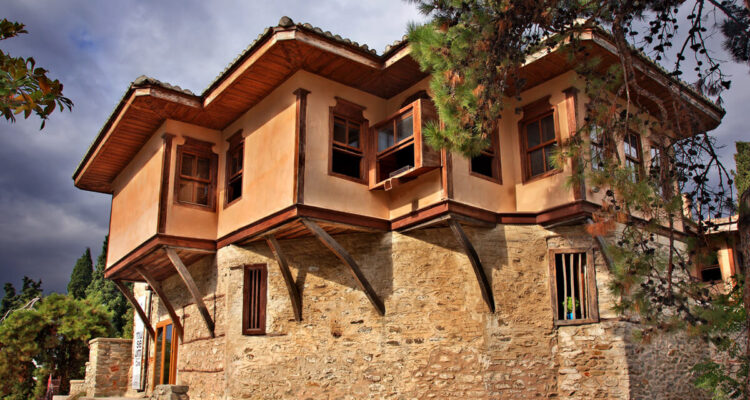The Mehmet Ali Residence, also known as the Mohamed Ali Residence, is a historical monument in Kavala. It was the largest house in the city at the time it was built.
The first impression upon entering, the house reminds the visitor of Kavala, how the city, where the later ruler of Egypt was born and lived until the age of thirty, looked like during the 18th century. Mehmet Ali, although he was not born in this house, lived in it for an important part of his life. In particular, it is believed that he lived there from 1787 until around 1800.
The building, which was built in the 1780s (330 sq. m2) was the largest house in the city of Kavala at that time. Nowadays, it is considered one of the finest surviving examples of Ottoman architecture of the 18th century in Greece. It has two floors, a hammam, and has a heating system. The hammam, as well as the living, dining, sleeping and entertainment rooms, are located on the second floor. There are fireplaces in all the rooms of the house, which indicates the special social status and financial prosperity of the owner. The house is located in such a location that it has a panoramic view from all sides. From its entrance you can see the port of Kavala, while on the other side the view is a beautiful bay. It has a large garden, where a piece of Mehmet Ali’s mother’s tomb, which used to be located in Eleftheria Square, is kept to this day.
In the building, the separate layout of men’s and women’s areas was implemented (selamlik – men’s and haremlik – women’s). In the southern section is the selamlik, which includes the living and working areas of the men, as well as the reception areas for their visitors. In the northern section is the haremlik, which contains the women’s areas, where the daily household chores can be completed. Also, in the haremlik are the most private areas of the whole household.
Muhammad Ali’s house, like Imaret, belongs to the Egyptian government, as a waqf property. The building is managed by the MOHA Research Center, which was founded in 2006 and aims at intercultural dialogue between Greece, the Mediterranean countries and the Islamic world. The building now functions as a museum, has multimedia, so it can be more accessible to the visitors and conducts various educational, research and cultural activities.
Copyright 2023 © Created By Diadyktio, All Rights Reserved.
To provide the best experiences, we and our partners use technologies like cookies to store and/or access device information. Consenting to these technologies will allow us and our partners to process personal data such as browsing behavior or unique IDs on this site and show (non-) personalized ads. Not consenting or withdrawing consent, may adversely affect certain features and functions.
Click below to consent to the above or make granular choices. Your choices will be applied to this site only. You can change your settings at any time, including withdrawing your consent, by using the toggles on the Cookie Policy, or by clicking on the manage consent button at the bottom of the screen.

Congratulation!